An alkaline battery is a poor choice to power an LED without boost step up converter. The voltage starts at 1.5V and discharges down to 0.8v over it's lifespan. A Lithium battery would be a much better choice when using a primary non-rechargeable battery because the voltage does not drop much over its lifespan. For a single LED, a 3V lithium would be a good choice as you can find LEDs of any color with forward voltages below 3V.
A 3.3V Li-ion USB power bank would probably be the ideal way to power a single LED.
For any battery powered LED you should find the most efficient LED with the highest luminous intensity. Not only will the battery last longer but you can run the LED at a lower current which will lower the forward voltage below the typical Vf.
The most efficient luminous color is green. While blue and white are the most efficient LEDs in terms of the number of photons and radiant watts, the Photopic Luminous Efficacy (human sensitivity) of green more than makes up for its radiometric and quantum inefficiency.
If you want white a flashlight is hard to beat.
No matter what color you want the most efficient LED available in that color.
So let's look at green LEDs. You show a preference for through hole LEDs Through hole LEDs are mostly 20 mA LEDs. While there are some 50 mA LEDs that have a higher luminous intensity they are rarely more efficient than the 20 mA LEDs. So let's look at what Digikey has in 20 mA green "indicator LEDs" which is where you find the through hole LEDs. Sort the list by the highest "Millicandela Rating" and while the Broadcomm are brighter the Cree C503B-GAS-CB0F0792 cost $1 less at 25¢ each.
At first glance the Cree LED appears to have a Vf higher than a 3V lithium battery at 3.2V. Except that 3.2V is at 20 mA. With 53,650 mcd we can reduce the current down to 1 mA and still have 2,680 mcd which is probably brighter than most cheap LEDs running at 20 mA.
Now when you look at the datasheet you will see the Vf drops to below 2.9V. Based on other LEDs where their datasheet shows the Vf curve down below 1 mA, this LED will probably have a Vf of about 2.75V @ 1 mA.
A 200 Ω resistor with a 3V lithium battery will likely work very well with the Cree C503B LED.
There are some that do not believe that resistors are an efficient way to regulate LED current but with a 3V battery and a 2.8 Vf, the efficiency is greater than 93% and will improve as the battery discharges.
While a CR2032 is a lithium battery it is not intended to supply milliamps of current. Their capacity is rated at 190 µA.
A 3000 mAh(@ 30 mA continuous) lithium CRV3 is more suitable and would last about 150 hours above 2.8V with a continuous 20 mA load.
Bottom Line
Rather than bridge an LED across a battery's terminals and get unpredictable results, use an LED with a forward voltage below the battery voltage and use a resistor to limit the current. Use a battery with a flat discharge curve to minimize the change in brightness as the battery discharges.
When an LED is driven with a voltage source the current will be whatever the voltage is on the IV curve. A aluminum gallium arsenide (AlGaAs) Deep Red and aluminum indium gallium phosphide (AlInGaP) Yellow, Orange, Red will light up with 1.5V but the current will likely be less much less than 1 mA.
A indium gallium nitride (InGaN) White, Blue, and Green will require more than 1.5V to light up.
When an LED's Vf is greater than 3V (e.g. InGaN) you can power it with any type of voltage source including a low impedance voltage source. If the voltage does not exceed the normal operating voltage range of the LED, the LED will likely work okay.
You can connect a low wattage AlGaAs LED to a 3V battery the LED may not burn out but you will very likely reduce the lifespan of the LED.
The LED pictured below is an amber AlInGaP. I connected it to two series AAA alkaline batteries and it survived. But it is a 1 Amp LED with a max Vf of 2.8V. The AAA batteries could not supply an amp of current at 3V. The no load voltage of the batteries was 3.11V which dropped to 2.3v when connected to the LED. When connected to 2 alkaline AA batteries with a no load voltage of 3.23V the battery voltage dropped to 2.7V when connected to the LED and the LED got very hot (over 60° C) very fast (10 seconds). Putting a 2.8 Ω resistor across the two AAAs the voltage dropped to 2.7V. Across the AAs, 2.9V.
Here is an amber LED powered by a single alkaline AA cell.

The same LED powered with two series alkaline AA batteries.


